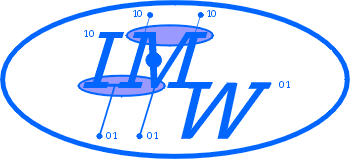INSTITUTE OF MATHEMATICAL ECONOMICS


Wulf Albers
Abstract
The paper introduces the present state of the applications of the theory of
prominence of ALBERS-ALBERS (1983) to the perception of numerical information.
Basic elements of the theory can be found in the WEBER-FECHNER law (1834, 1860)
concerning the psychophysical perception of physical stimuli as brightness,
loudness, or weight. The rules are (1) evaluation of the intensity of stimuli
is logarithmic, (2) stimuli are perceived with a constant relative exactness,
and (3) there is a smallest absolute intensity that can be perceived. The same
rules can be applied to the perception of stimuli which are presented in a
numerical way, as prices, quantities, percentages, or time. The perception of
all these different kinds of stimuli is ruled by identical basic laws concerning
the perception of numbers, here presented for the decimal system.
Basic elements of the theory is a system of numbers which are most easily
perceived, the full step numbers {a*10^i: a Î
{1,2,5}, i integer}. Comparison of
numerical stimuli happens on a scale, on which the full step number define the
full steps. Half steps, quarters, etc. can be defined. The difference of
numerical stimuli is given by the difference measured in steps on this scale.
Every number is perceived as a sum of full step numbers, where the coefficients
are +1, -1, or 0, i.e. one obtains a number by starting with some high full step
number and refines the number stepwise by adding or subtracting finer full step
numbers, for instance 17=20-5+2. The exactness of such a presentation is the
finest full step number needed in the presentation, the exactness of a number is
given by the crudest exactness over all possible presentations of the number,
the relative exactness of a number is its exactness divided by the number.
The system of half steps, quarter steps, etc. corresponds to perception with
decreasing exactness. As in the WEBER-FECHNER laws (2) and (3) it turns out that
- depending only on situation, person, and task - relative exactness and
absolute exactness of perception are constants. These rules are insofar
different from the WEBER-FECHNER law that 1. rule (3) becomes important since it
enables to compare positive and negative payoffs (while the variables of the
WEBER-FECHNER approach are allways positive), and 2. the constants of exactness
do now also depend on the task. While spontaneous perception usually happens at
a half step level, the absolute exactness of perception, more precisely the
finest perceived full step essentially depends on the task. For the evaluation
of money the finest perceived full step is roughly 20% of the largest absolute
money value involved in the task.
Accordingly, it is not possible to present the obtained rules of perception of
numerical differences by a universal perception function, specificly, it is not
possible to give an universal utility function describing the perception of
monetary payoffs (as KAHNEMAN-TVERSKY do in their v-function). The nonexistence
of such a function creates for instance the possibility that the same prospect
can be evaluated differently depending on other prospects with which it is
compared. This is the reason for a kind of preference reversal which could be
predicted by the theory here, and afterwards verified in the experiment.
The generalized perception function of our model is compared with the evaluation
functions of KAHNEMAN-TVERSKY (1992). The new approach could be successfully
used to modify traditional fairness concepts for different types of bargaining
situations (KALAI-SMORODINSKY's equal concession solution, HARSANYI-SELTEN's
risk dominance, NASH's bargaining solution) in a way that they now seem to be
the best predictors for the related experimental behavior.
It may be mentioned that the modificaton of traditional concepts follows certain
simple rules, and that in the obtained solutions the variables are only treated
on an additive level (no products, no quotients), and all coefficients of
involved variables are either +1 or -1. This simplicity might be a general
phenomenon of certain boundedly rational models, so that the decision maker has
only to decide, whether to apply a given variable or not, and in which direction
it works.
Further results that confirm the given approach are presented in Part IV.

| walbers@wiwi.uni-bielefeld.de | ||||
| List of IMW Working Papers | Members of the IMW | |||
|
Last Update: Monday, 23-Nov-98 13:45:48 MET©
Michael Borgelt Sending to: 134.76.163.122, Index:1 |